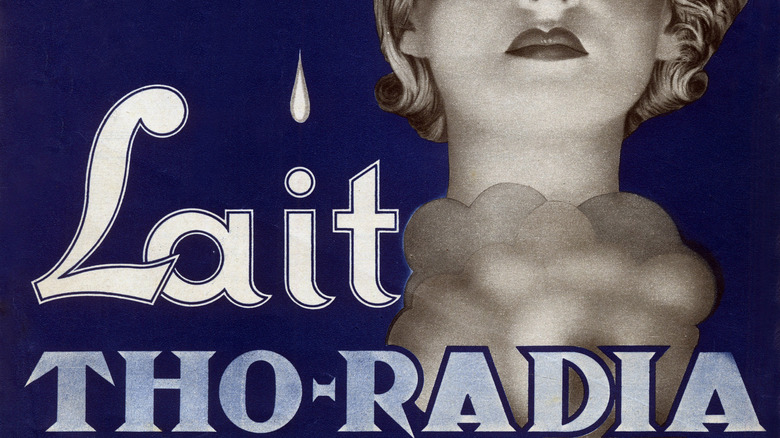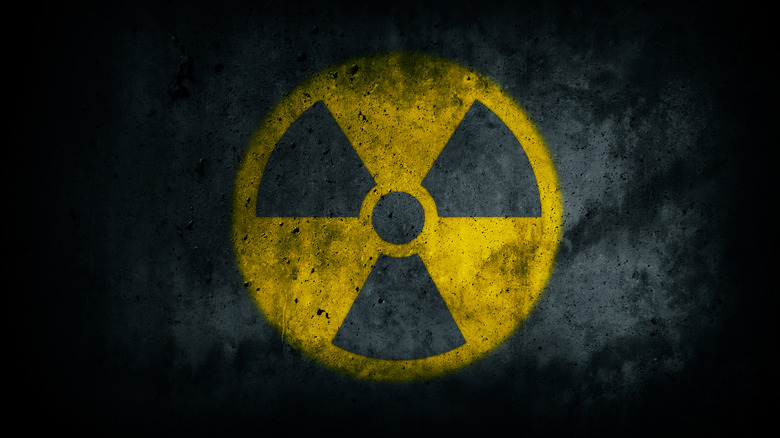Why This Radioactive Beauty Trend Became So Popular In The 1920s
Our understanding of radioactivity has come a long way. While we all know that radioactive materials should be handled with the utmost caution, the early 20th century saw a much more cavalier attitude towards radioactivity, as its dangers and carcinogenic effects were not as understood. A great, harrowing example of this was the trendy use of radioactive materials as female beauty products to be smeared liberally against the skin with no knowledge of the health implications to come.
According to CNN, one of the most popular lines of radioactive beauty products was Tho-Radia, named after thorium and radium. Tho-Radia claimed to be a "scientific beauty product" that could firm muscle and reduce wrinkles, among other supposed benefits. Radioactivity had only been observed in 1896, and by 1933, there was still much mystique around the phenomena. Things that were radioactive stored energy, that much was certain, and many companies marketed that energy as beneficial to one's smile and skin.
Tho-Radia had a Curie on its side
According to the Museum of Radiation and Radioactivity, Tho-Radia was invented by a pharmacist named Alexis Moussalli, who had some shady business tricks up his sleeve. First, he recruited a physician named Alfred Curie to join his team. The doctor had no relation to Pierre and Marie Curie, pioneers in the field of radiation, but Moussalli was only interested in having a Curie for name recognition. In fact, Tho-Radia cream was said to come from a formula designed by Alfred Curie. But while the creams, lipsticks, and powders made by the company had very low levels of thorium and radium — unlikely to cause much harm — the same could not be said for some of their radioactive competitors.
An energy drink called Radithor, marketed so wildly it was claimed to be both an aphrodisiac and a treatment for diabetes, had small amounts of radium dissolved into it (via CNN). The company's spokesman would die after consuming three bottles of Radithor a day. Other lethal radiation gimmicks included the fad of painting watches with radioactive paint so they would glow in the dark. Many of the women who handled the paint, dubbed the "Radium Girls," suffered from radiation sickness, which occasionally became lethal. The fad of radioactive products wasn't too long-lived, but it was certainly deadly.

